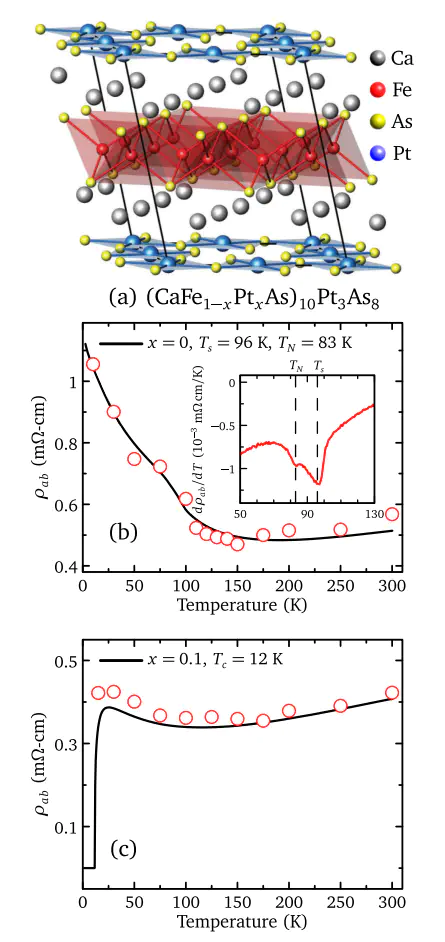Unravelling the mechanism of the semiconducting-like behavior and its relation to superconductivity in (CaFe1−xPtxAs)10Pt3As8

摘要
The temperature-dependence of the in-plane optical properties of (CaFe1−xPtxAs)10Pt3As8 have been investigated for the undoped (x = 0) parent compound, and the optimally doped (x = 0.1) superconducting material (Tc 12 K) over a wide frequency range. The optical conductivity has been described using two free-carrier (Drude) components, in combination with oscillators to describe interband transitions. At room temperature, the parent compound may be described by a strong, broad Drude term, as well as a narrow, weaker Drude component. Below the structural and magnetic transitions at 96 and 83 K, respectively, strength is transferred from the free-carrier components into a bound excitation at 1000 cm−1, and the material exhibits semiconducting-like behavior. In the optimally doped sample, at room temperature the optical properties are again described by narrow and broad Drude responses comparable to the parent compound; however, below T ∗ 100 K, strength from the narrow Drude is transferred into a newly emergent low-energy peak at 120 cm−1, which arises from a localization process, resulting in semiconducting-like behavior. Interestingly, below Tc, this peak also contributes to the superfluid weight, indicating that some localized electrons condense into Cooper pairs; this observation may provide insight into the pairing mechanism in iron-based superconductors.